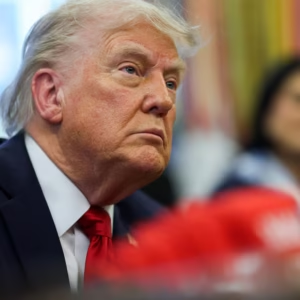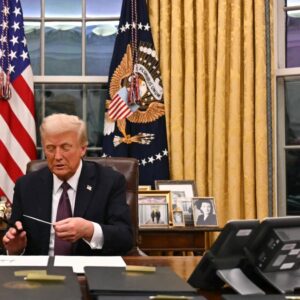A Biden-era plan to dismantle Second Amendment protections in the name of eliminating domestic terrorism threats has been exposed by Tulsi Gabbard, President Donald Trump’s director of national intelligence.
Titled the “Strategic Implementation Plan for Countering Domestic Terrorism,” the 15-page report details unprecedented actions slated for implementation should former President Joe Biden or Vice President Kamala Harris have won the 2024 election. Some have long been held up by firearms advocates as examples of unconstitutional use of presidential power.
Gun Owners of America cited a passage in the report, titled “Confronting Long-Term Contributors to Domestic Terrorism,” which recommended the Biden-Harris administration move aggressively to “[r]ein in the proliferation of ‘ghost guns’; encourage state adoption of extreme risk protection orders; and drive other executive and legislative action, including banning assault weapons and high-capacity magazines.”
“Lethal means for perpetrating acts of domestic terrorism are reduced. Greater care is provided earlier to potentially dangerous individuals. Norms of non-violent political expression and rejection of racism and bigotry are strengthened. Americans have increasing faith in democracy and government. Increase intervention and care for those who pose a danger to themselves and others. Strengthen civics education that promotes democratic resiliency. Increase civic engagement to foster social cohesion,” are goals stated by the authors, who suggested rolling back Second Amendment rights.
The report proves all along that President Biden hatched a “secret plan to eliminate the Second Amendment in the name of ‘counterterrorism,” the gun rights group wrote on X.


The proliferation of ghost guns, which are mainly produced using 3D printing technology and are generally untraceable, have been a target for prohibition by lawmakers in recent years. A homemade firearm was used by Luigi Mangione, the 26-year-old accused of killing United Healthcare CEO Brian Thompson in December of 2024.
Extreme risk protection orders, or so-called “red flag” laws, are more controversial, however. In states where they have been implemented, ERPOs often allow for friends, family, counselors, chaplains, employers, or other mandated reporters to tell authorities if they believe a gun owner poses a substantial risk to themselves or others.
Based on their findings, a local police chief or judge may order the confiscation of an individual’s firearms pending the outcome of an investigation.
Red flag laws have been on the books for years in a number of blue states whose lawmakers cite the reduction in domestic violence or stereotypical instances of mass shootings. However, urban areas like Chicago and Los Angeles continue to struggle with persistent crime committed by those without registered firearms, a fact that gun rights advocates have pointed out amid the debate over whether more laws or restrictions will actually solve the problem of illegal gun ownership.
President Donald Trump has signed a number of executive orders rolling back Biden’s Second Amendment restrictions, actions he promised the NRA he would fulfill while on the campaign trail last year.
“Every single Biden attack on gun owners and manufacturers will be terminated on my very first week back in office, perhaps my first day,” Trump said at the NRA’s Presidential Forum last February.






